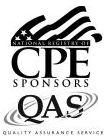Accounting for Managers (CPE Course)
CPE Credit: 18 hours
Course Type: Downloaded PDF materials with online test
Price (with PDF Textbook): $125
Course Description
Non-financial managers need a sufficient knowledge of accounting to interpret a company’s financial statements and make key business decisions. The Accounting for Managers course describes how accounting transactions are compiled into financial statements and how information about company performance can be extracted from those statements. It also addresses decisions in such areas as sales and marketing, human resources, and acquisitions that are impacted by accounting information. The course describes several tools, including target costing and constraint analysis, which can be used to improve upon business decisions. In short, Accounting for Managers is the ideal toolkit for understanding how accounting information can be used to drive business decisions.
Author: Steven Bragg
Course Number: AC1101
Table of Contents
Chapter 1. The Need for Accounting Information
Chapter 2. Introduction to Accounting
Chapter 3. The Financial Statements
Chapter 4. Interpreting Financial Statements
Chapter 5. Evaluation of Responsibility Centers
Chapter 6. Overview of Selected Accounting Standards
Chapter 7. Sales and Marketing Decisions
Chapter 8. Human Resources Decisions
Chapter 9. Investment Decisions
Chapter 10. Acquisition Decisions
Chapter 11. Cost Accounting Tools and Concepts
Chapter 12. Target Costing
Chapter 13. Constraint Analysis
Chapter 14. Budgeting Concepts
Chapter 15. Budgetary Control
Learning Objectives
Cite the types of accounting transactions and where they are recorded, as well as the roles of the controller and chief financial officer.
Specify the different accounting principles and sub-ledger types, as well as the structure of the general ledger, and the reasons for the accounting cycle.
Identify the types of financial statements and their reporting formats, as well as their users.
State the types of ratio analysis used to interpret the financial statements, the uses of each one, and their contents.
Specify the uses to which different account code structures can be put, and the different types of responsibility centers.
Cite the proper accounting for loss contingencies, compensated absences, research and development, acquired software, and stock-based compensation.
Specify how the contribution margin, breakeven levels, and margin of safety can be calculated and how they are used, as well as the determinants of demand.
Identify the types of payroll systems, the uses of the different pay codes, the types of deposit schedules, the criteria for designating a person as an employee, and the penalties associated with payroll tax underpayment.
State the nature of the analysis methods used to examine possible investments, as well as the advantages of each one.
Specify the features of the various acquisition structures and the benefits to be gained from each one, as well as the nature of appraisal rights.
Identify the limitations of direct cost analysis and the components of an activity-based costing analysis.
Itemize the activities that can be pursued to achieve a target cost when designing a new product, as well as the sources of the required cost analysis information.
State the main features of a system of constraint analysis, and how this system can be used to improve profits.
Specify the methods used to derive estimates for a budget, the impact of operational changes on a budget, and how information rolls up through the various subsidiary-level budgets. Also note the calculation methods used to derive production and labor budgets.
Identify the types of variances, the factors that can trigger different types of variances from the expected amounts, and also note the reports used to reveal variance information.
Level: Overview
Instructional Method: QAS Self-Study
NASBA Category: Accounting
Prerequisites: None
Advance Preparation: None
Latest Review Date: January 2025
Program Registration Requirements: Click on "Purchase Course" near the top of this page to pay for and access the course. You will then be able to download the course as a PDF file, then take an on-line examination, and then download a certificate of completion if you pass the examination.
Program Refund Policy: For more information regarding administrative policies concerning complaints, refunds, and other matters, see our policies page.
AccountingTools, Inc. is registered with the National Association of State Boards of Accountancy (NASBA) as a sponsor of continuing professional education on the National Registry of CPE Sponsors. State boards of accountancy have the final authority on the acceptance of individual courses for CPE credit. Complaints regarding registered sponsors may be submitted to the National Registry of CPE Sponsors through its website: www.nasbaregistry.org.
The NASBA sponsor identification number for Accountingtools, Inc. is 115881.
AccountingTools is an IRS Approved Continuing Education Provider. We are compliant with the requirements for continuing education providers (as described in sections 10.6 and 10.9 of the Department of Treasury’s Circular No. 230 and in other IRS guidance, forms, and instructions). Our IRS Approved Continuing Education Provider number is 72821.


